Reconstruction of MH17 reveals final moments of doomed flight
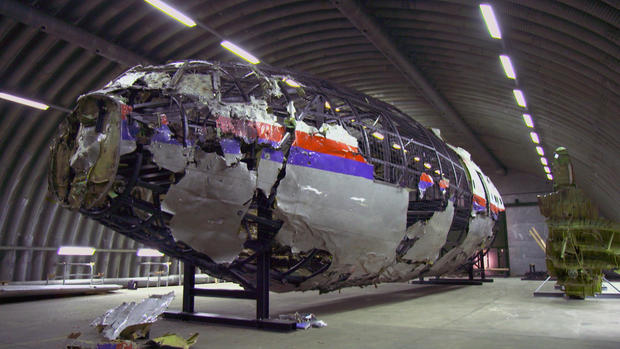
Part of the plane that was carrying 298 people on MH17 has been pieced together again after it was shot out of the sky in 2014. It’s given investigators a clear look at how the flight was shot down.
Investigators have rebuilt the front end of Malaysia Flight 17 in a Dutch hangar from some of the 8,000 fragments recovered from its crash site. The Boeing 777, 20 feet wide and 200 feet long, was shot down by a warhead in July 2014 as it flew over Ukraine, killing 298 people.
This week, 60 Minutes reports on the disaster:
- The long pursuit of justice for victims of MH17, the passenger jet shot down over Ukraine
- How Bellingcat tracked a Russian missile system in Ukraine
- 60 Minutes producer Henry Schuster explains the evolution of the story on MH17
The warhead detonated ten feet to the left of Captain Eugene Choo’s windscreen, projecting an estimated 800 pieces of shrapnel, each the size of a bullet. The Dutch Safety Board says the greatest density of holes, 102, is through the pilot’s window. Shrapnel tore through the cockpit and out the other side. The cockpit sheared away. And the rest of the plane flew another minute and a half, leaving debris scattered over a wide area. Passengers were thrashed by explosive decompression and a 500 mile an hour wind at 40 degrees below zero. One passenger was found wearing his oxygen mask.
“We were able to identify, from the 298 casualties, 296. So, for two people we didn’t find any remains,” Fred Westerbeke, the chief prosecutor investigating the tragedy, said.
MH17 pushed back from gate G3 at Amsterdam’s Schiphol Airport at 12:31 pm local time. It flew east over Germany and Poland, making a course adjustment over Ukraine to avoid possible thunderstorms. The Boeing 777 was almost three hours into a 12-hour route, on its way from to Kuala Lumpur, when a missile warhead exploded feet from the cockpit. The plane was crossing over an area that was in the midst of a war started by Ukrainian rebels and their Russian backers. Russia moved into Crimea, which was part of Ukraine, and annexed it in early 2014. Then separatists in eastern Ukraine, supplied by Moscow, took the area of eastern Ukraine along the Russian border. It was the beginning of a bloody conflict that has left more than 13,000 dead.
Ukraine had air superiority and used it to stop the rebel advance until Russia began supplying the rebels with anti-aircraft missiles. In the days before MH17 met its end, two Ukrainian military planes were shot down in the area. Ukraine closed the airspace to civilian traffic below 32,000 feet but despite that, the day Flight 17 entered the airspace, 160 airliners crossed above that flight ceiling in eastern Ukraine. It was cloudy and the last words heard from the crew came when Flight 17, at 33,000 feet, responded to a Ukrainian flight controller’s direction towards its next waypoint, repeating the coordinates: ROMEO NOVEMBER DELTA, Malaysian one seven. The Ukrainian tower repeated its call four times over the next two minutes, but MH17 had already disappeared from radar and was falling through the clouds, scattering bodies, luggage, and parts of the plane, along with shrapnel from the missile, over 20 square miles of rebel-controlled territory.
No one took responsibility for the shootdown, and 350 investigators from five countries began almost six years of work figuring out what happened. www.cbsnews.com
United Airlines affiliate Trans States Airlines to cease flying

A regional airline name familiar to many travelers in smaller communities will be gone by the end of the year when Trans States Airlines stops flying.
The demise of Trans States Airlines will have no impact on passengers, as 36 of its Embraer ERJ-145 jets will be transferred to ExpressJet Airlines by the end of 2020. Both ExpressJet and Trans States Airlines operate feeder flights for United Airlines under the United Express brand.
The shut down was communicated to Trans States Airlines employees in a letter from parent Trans States Holdings CEO Rick Leach on Monday that was viewed by TPG. The move does not impact Compass Airlines or GoJet Airlines, which are also owned by Trans States Holdings.
St. Louis-based Trans States Airlines fell victim to several factors that have wreaked havoc on regional airlines over the past few years. An industry-wide pilot shortage made hiring difficult, and a move by its mainline partner United to streamline its regional providers drove the decision to close the airline, Leach told employees.
United expanded its flying agreement for the Bombardier CRJ550 with GoJet this month. The regional carrier will operate 20 more of the 50-seat jets that include a first class-cabin. It expects to have a total of 74 aircraft by 2021.
When Trans States Airlines finally stops flying, it will be the end of a nearly 40-year history that included partnerships with storied names like Trans World Airlines (TWA). Founded in 1982, Trans States Airlines flew as Trans World Express (TWE) from 1985 until TWA merged with American Airlines in 2001. The carrier also had partnerships with Delta Air Lines and USAir, later US Airways, during its 38-year run.
Best beaches in Koh Samui
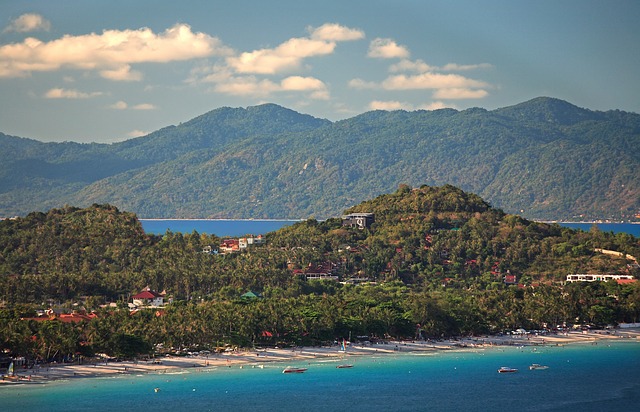
Koi Samui in the south of Thailand is a dream destination for many holiday makers. This bucket list island enjoys average temperatures of 30 degrees and boars a massive 40 beaches. So when you are not seeing the sights and fancy lazing in the sand, you have a fantastic choice. Here are five of the best beaches in Koh Samui that you need to visit while you are there.
1. Maenam
If you are looking to really get away from it all, this could be the beach for you. Long, scenic paths lead down to this beach, where you will find beach huts nestled between luscious green palm trees, you may never want to leave. The sand is a darker yellow, and the waters are, as you would expect, crystal clear. Some great pictures for the amateur photographer as the sun goes down, and then why not chill with a drink at one of the beach bars.

2. Chaweng
For those that prefer more in the way of the hustle and bustle then visit Chaweng. Widely lauded as one of the best beaches on the island it isn’t hard to see why. Chaweng is the largest and most popular of Samui’s beaches and is approximately 7 km long, making it the longest beach on the east coast. It is lined with coconut trees and boasts year long, warm temperatures ranging around 28C/86F. So while it is busier, there are opportunities to find quieter patches for your lounge chairs, and there is plenty on offer in the way of food and drink. It is easy to lose a day here, especially with the chance to see the reef that hides in the sparkling waters.

3. Lamai
Lamai Beach is Samui’s second-largest resort area after Chaweng. Forming a wide sweeping crescent Lamai is another beach to add to your must-see list. There are lots of water-based sports on offer, and this is a great stretch of sea for swimmers. Iconic palms sway lazily over the white sands, and the beach is marked by giant granite boulders that sit just offshore. Not as chaotic as Chaweng but still offering plenty of restaurants and spas, this is a stunning place to spend a day.

4. Choeng Mon
Rather than forming one stretch of sand, Choeng Mon consists of a run of little bays. Tucked up on the northern tip of the island it’s another quieter beach if you are looking to get away from it all for a few hours. The largest bay has more of the beautiful fine white sand, and you can experience some excellent snorkelling on the rocks at each end. If you fancy some sea kayaking, you can head out to an inlet on the other side of the bay.

5. Bophut
Back to the darker yellow sand, Bophut is another widely acclaimed beach in Koh Samui. Although a lot of the beach is built up with hotels and resorts, it still offers some stunning views out into the water. With the sizzling temperatures and the clearest of blue waters, it is indeed not going to disappoint. If you fancy a meal while you are there, you have an excellent choice of cafes and bars as well as luxury resort restaurants.

By Kerrie Potts from exclusiveprivatevillas.com
Rent the car of your dreams from Gotham Dream Cars

Gotham Dream Cars™ offers in New York, Miami, and Los Angeles’ premier exotic car rental and exotic car experience company, featuring “ultra-exotic” and luxury cars from the most exclusive manufacturers in the world, including Ferrari, Lamborghini, Bentley, Porsche, Aston Martin, Rolls Royce and more.
Gotham Dream Cars have been in business since 2004 and have made thousands of their clients’ dreams come true. Whether you need to rent one of the exotic cars for yourself, treat a friend to a driving experience, or spend a night on the town with a client, Gotham Dream Cars will make it happen.
Rent the car of your dreams for a day, weekend, week or more. Door-to-door delivery available. Rentals starting at $395 per day. For more information: gothamdreamcars.com
New Restaurants and Rooms at Sandals Royal Caribbean

Sandals Royal Caribbean has been busy. The Montego Bay resort has recently been making changes to ensure guests experience luxury their own way, by adding two new restaurants and three new room categories.
The luxury beach resort now has eight on-site restaurants with the addition of the new Spices Pan Caribbean Cuisine and Bombay Club restaurants.
Spices Pan Caribbean Cuisine is open for breakfast, lunch, and dinner and brings flavors from all around the world to one place. Bombay Club is open for dinner only, with views as stunning as the food is delicious.
Sandal Royal Caribbean is also now providing three new room categories for guests to choose from.
The first option is a Royal Beachfront Butler Corner Suite with Balcony Tranquility Soaking Tub. These new Love Nest Butler Suites are located on the second and third floors of the beachfront Sandringham building and feature fully retractable glass walls that reveal 180-degree views of the ocean, the resort’s private island, and breathtaking over-the-water suites.
Other amenities include a spacious balcony, Tranquility Soaking Tub, master bedroom with privacy curtains, a king-sized bed, smart TV, and a fully stocked bar. The suite’s bathroom houses a walk-in rain shower, long vessel sinks, and large backlit mirrors. To top it all off, the room provides a personal butler, and room service is available 24 hours a day.

The next room category is a Beachfront Honeymoon One-Bedroom Walkout Butler Suite with Patio Tranquility Soaking Tub. These suites are located on the ground floor of the Sandringham building, right on the beach.
The suite’s large patio boasts a Tranquility Soaking Tub for two with privacy curtains and a bistro dining set, making the suite hard for couples to leave.
The master bedroom features the same amenities as the previous category but is also equipped with a separate living room with a fully-stocked wet bar and second smart TV. The bathroom is slightly bigger, with a dual-control, walk-in rain shower, twin vessel sinks, and large backlit mirrors. This suite also provides a butler and 24-hour room service.

The final new room category is a Royal Beachfront Club Elite Suite with Balcony Tranquility Soaking Tub. Located on the second and third floors of the Sandringham building, these new rooms offer breath-taking views of the Caribbean Sea and the resort’s private island.
This room option boasts all the features of the previous category, but instead of a personal butler, guests have access to Club Sandals concierge services. For more information, visit www.sandals.com/royal-caribbean/.
Commercial air travel is safer than ever MIT report says
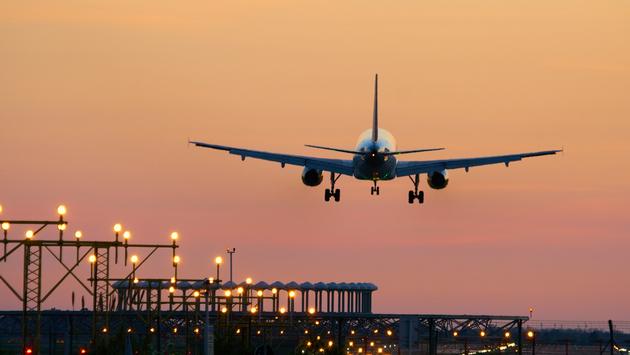
The rate of passenger fatalities has declined yet again in the last decade, accelerating a long-term trend.
It has never been safer to fly on commercial airlines, according to a new study by an MIT professor that tracks the continued decrease in passenger fatalities around the globe.
The study finds that between 2008 and 2017, airline passenger fatalities fell significantly compared to the previous decade, as measured per individual passenger boardings – essentially the aggregate number of passengers. Globally, that rate is now one death per 7.9 million passenger boardings, compared to one death per 2.7 million boardings during the period 1998-2007, and one death per 1.3 million boardings during 1988-1997.
Going back further, the commercial airline fatality risk was one death per 750,000 boardings during 1978-1987, and one death per 350,000 boardings during 1968-1977.
“The worldwide risk of being killed had been dropping by a factor of two every decade,” says Arnold Barnett, an MIT scholar who has published a new paper summarizing the study’s results. “Not only has that continued in the last decade, but the [latest] improvement is also closer to a factor of three. The pace of improvement has not slackened at all even as flying has gotten ever safer and further gains become harder to achieve. That is really quite impressive and is important for people to bear in mind.”
The paper, “Aviation Safety: A Whole New World?” was published online this month in Transportation Science. Barnett is the sole author.
The new research also reveals that there is discernible regional variation in airline safety around the world. The study finds that the nations’ housing the lowest-risk airlines are the U.S., the members of the European Union, China, Japan, Canada, Australia, New Zealand, and Israel. The aggregate fatality risk among those nations was one death per 33.1 million passenger boardings during 2008-2017.
For airlines in the second set of countries, which Barnett terms the “advancing” set with an intermediate risk level, the rate is one death per 7.4 million boardings during 2008-2017. This group – comprising countries that are generally rapidly industrializing and have recently achieved high overall life expectancy and GDP per capita – includes many countries in Asia as well as some countries in South America and the Middle East.
For a third and higher-risk set of developing countries, including some in Asia, Africa, and Latin America, the death risk during 2008-2017 was one per 1.2 million passenger boardings – an improvement from one death per 400,000 passenger boardings during 1998-2007.
“The two most conspicuous changes compared to previous decades were sharp improvements in China and in Eastern Europe,” says Barnett, who is the George Eastman Professor of Management at the MIT Sloan School of Management. In those places, he notes, had safety achievements in the last decade that were strong even within the lowest-risk group of countries.
Overall, Barnett suggests, the rate of fatalities has declined far faster than public fears about flying.
“Flying has gotten safer and safer,” Barnett says. “It’s a factor of 10 safer than it was 40 years ago, although I bet anxiety levels have not gone down that much. I think it’s good to have the facts.”
Barnett is a long-established expert in the field of aviation safety and risk, whose work has helped contextualize accident and safety statistics. Whatever the absolute numbers of air crashes and fatalities may be – and they fluctuate from year to year – Barnett has sought to measure those numbers against the growth of air travel.
To conduct the current study, Barnett used data from a number of sources, including the Flight Safety Foundation’s Aviation Safety Network Accident Database. He mostly used data from the World Bank, based on information from the International Civil Aviation Organization, to measure the number of passengers carried, which is now roughly 4 billion per year.
In the paper, Barnett discusses the pros and cons of some alternative metrics that could be used to evaluate commercial air safety, including deaths per flight and deaths per passenger miles traveled. He prefers to use deaths per boarding because, as he writes in the paper, “it literally reflects the fraction of passengers who perished during air journeys.”
The new paper also includes historical data showing that even in today’s higher-risk areas for commercial aviation, the fatality rate is better, on aggregate, than it was in the leading air-travel countries just a few decades in the past.
“The risk now in the higher-risk countries is basically the risk we used to have 40-50 years ago” in the safest air-travel countries, Barnett notes.
Barnett readily acknowledges that the paper is evaluating the overall numbers, and not providing a causal account of the air-safety trend; he says he welcomes further research attempting to explain the reasons for the continued gains in air safety.
In the paper, Barnett also notes that year-to-year air fatality numbers have notable variation. In 2017, for instance, just 12 people died in the process of air travel, compared to 473 in 2018.
“Even if the overall trendline is [steady], the numbers will bounce up and down,” Barnett says. For that reason, he thinks looking at trends a decade at a time is a better way of grasping the full trajectory of commercial airline safety.
On a personal level, Barnett says he understands the kinds of concerns people have about airline travel. He began studying the subject partly because of his own worries about flying, and quips that he was trying to “sublimate my fears in a way that might be publishable.”
Those kinds of instinctive fears may well be natural, but Barnett says he hopes that his work can at least build public knowledge about the facts and put them into perspective for people who are afraid of airplane accidents.
“The risk is so low that being afraid to fly is a little like being afraid to go into the supermarket because the ceiling might collapse,” Barnett says. news.mit.edu
U.S. Federal proposal would let airlines block emotional support animals from flying

A federal proposal unveiled Wednesday would significantly limit the types of animals entitled to fly in aircraft cabins as emotional support animals.
It’s a crackdown the industry has sought amid concerns some passengers are bringing their untrained pets aboard by fraudulently passing them as emotional support animals. The result, the industry, and Transportation Department have said, is an increase in incidents such as bitings aboard planes.
“The days of Noah’s Ark in the air are hopefully coming to an end,” said Sara Nelson, president of the Association of Flight Attendants-CWA, which represents 50,000 crew members.
The proposal would free airlines from the requirement to accommodate passengers’ emotional support animals and reclassify them as pets. Airlines have greater leeway to determine their pet policies, including charging passenger fees and setting size limits.
It would continue to require airlines to accommodate service animals, but restrict that category to dogs only. The current regulations allow a limited list of service animal species, including miniature horses.
The department is considering expanding the proposal to allow miniature horses but is concerned they are less agile in the confined spaces of an aircraft, according to a Transportation Department official who briefed reporters on Wednesday morning.
The proliferation of websites selling a doctor’s certification that a passenger requires an emotional support animal “has enabled people who are not truly in need of animal assistance to abuse the rules and evade airline policies regarding animals in the cabin,” said the Airlines for America industry group.
Under the proposal, passengers traveling with a service animal would be required to fill out a government form certifying the animal has been trained specifically to assist them with a disability. Falsification of the form would be a crime, which the official said would serve as a deterrent.
“When there are abuses in the system, it’s individuals with disabilities who suffer,” the Transportation Department official said.
The department cited a number of reasons for the change, including the unusual status that emotional support animals enjoy in air travel.
“Animals on aircraft may pose a risk to the safety, health, and well-being of passengers and crew and may disturb the safe and efficient operation of the aircraft,” the proposal says. It cited data that show “increases in the number of behavior-related service animal incidents on aircraft, including urinating, defecating, and biting.”
The “many different unusual species of animals, such as a peacock, ducks, turkeys, pigs, iguanas, and various other types of animals” that passengers can bring aboard as emotional support animals cause confusion among passengers and burdened airline employees, it said.
The proposal would explicitly prohibit airlines from banning specific breeds of dogs from traveling as service animals. In 2018, Delta attempted to ban pit bulls as emotional support animals, citing biting incidents. fox43.com
Dubai airport implements special screening for China flights
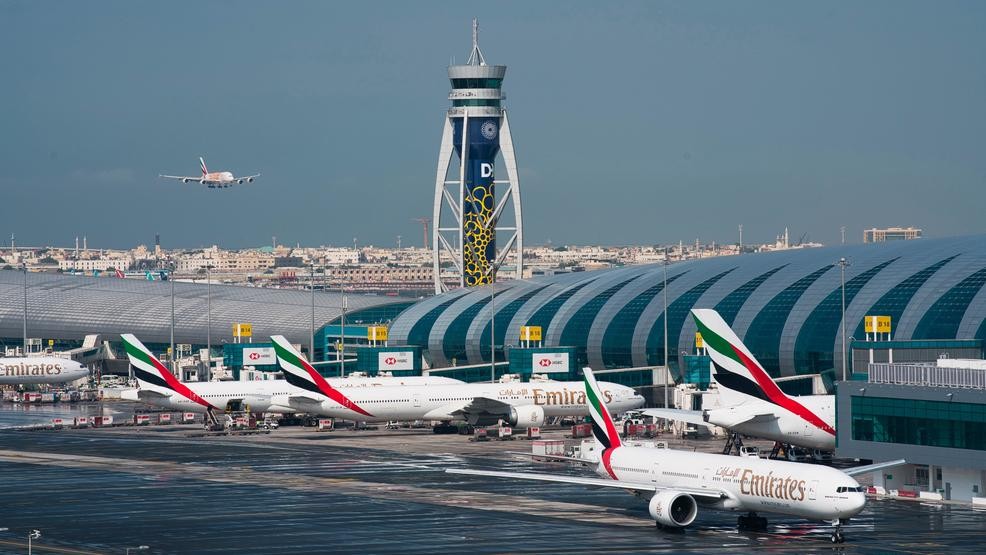
Dubai International Airport, the world’s busiest for international travel, announced that it’s taking special precautions to screen the droves of Chinese tourists expected for the Lunar New Year holiday after the outbreak of a pneumonia-like virus that has led to China’s lockdown of the entire city of Wuhan.
Dubai Airports said that, following government guidance, all passengers arriving on direct flights from China will receive thermal screening at the gate upon arrival and be provided with informational brochures.
The screening will be conducted at secured, closed gates by teams from the Dubai Health Authority and the Airport Medical Center, Dubai Airports said in a statement provided to The Associated Press.
The airport authority would not say whether it expected a drop in passengers from China for the Lunar New Year holiday, which begins Friday, following China’s decision to close off Wuhan, a city of 11 million people, where a newly identified coronavirus first appeared last month. Chinese are expected to take an estimated 3 billion trips during the 40-day spike in travel.
China shut down train stations, the airport, subways, ferries and long-distance shuttle buses in the city, and local authorities have demanded all residents wear masks in public places.
Measures similar to those enacted in Wuhan were being taken at nearby cities in Hubei province, with public transport suspended and theaters, internet cafes, and other entertainment centers closed beginning Friday, according to state media reports.
The coronavirus family includes the common cold as well as viruses that cause more serious illnesses, such as the SARS outbreak that spread from China to more than a dozen countries in 2002-2003 and killed about 800 people, and Middle Eastern respiratory syndrome, which developed from camels.
So far, most of China’s 571 cases have been in Wuhan and a total of 17 people have died, all of them in and around the city.
The Lunar New Year is one of the world’s largest annual movement of people, and previously Dubai Airports said it was “preparing to welcome thousands of Chinese travelers” ahead of the weekend.
Preliminary figures show Dubai Airport welcomed some 3.7 million passengers from China, a 5% increase year-on-year. local12.com
Passing out on a plane is pretty common
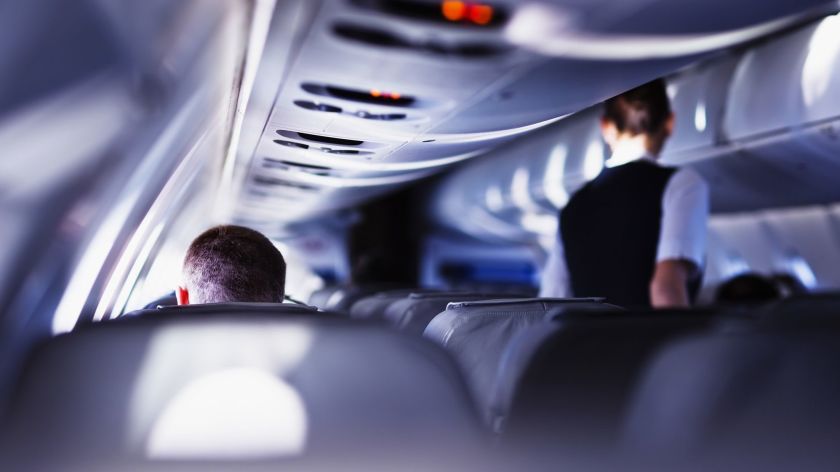
On long-haul flights of six hours or more, it’s not unusual for at least one passenger to lose consciousness.
During my 30-year career as a flight attendant, no fewer than 300 passengers have passed out while I was on duty. (This is a conservative estimate based on about one fainting victim a month for the last three decades.)
People faint for a variety of reasons, including dehydration, irregular heartbeat, low blood sugar, hyperventilation, a sudden drop in blood pressure, standing up and, of course, drinking alcohol, according to WebMD.com. On an airplane, where air circulation is notoriously poor, the lack of oxygen to the brain because of high cabin pressure can exacerbate the problem. Warm cabin air can make matters worse, which is partly why the temperature in an airplane cabin is often set to an uncomfortably cold level.
None of my fainting passengers suffered serious medical complications. Most woke within seconds after collapsing and were back to normal after drinking orange juice or water. Some required oxygen that my colleagues or I administered.
Every fainting passenger did so publicly, in front of dozens of people. The person typically rose from his or her seat, stumbled down the aisle or leaned, on wobbly legs, against a bulkhead. And then … bam! The person crumpled to the floor amid gasps from fellow passengers, who alerted the crew.
But what happens when a passenger loses consciousness and no one witnesses the event? I found out on a recent flight from Miami to Saõ Paulo, Brazil.
The incident occurred about 4 a.m., halfway through the eight-hour flight. The airplane cabin was dark, save a few flickering seatback monitors and passenger reading lights. Most of the 304 passengers dozed in their seats.
For a few moments, I was the only crew member attending the first-class cabin. Our Boeing 777-300 had a first-class configuration of only eight seats. The 12 other flight attendants milled about in business class, the main cabin or slept in the crew bunks during a contractual break.
While sitting on my jump seat, immersed in a novel, I heard a loud thumping. I stood up to scan the first-class cabin. All eight-passenger seats were lying flat. Everyone appeared to be sleeping peacefully except the man in seat 1A. Moments earlier, he had left his seat to use the lavatory.
The thumping persisted and the sounds were coming from the same lavatory the passenger had entered.
Years earlier, on a different long-haul flight, I heard thumping noises originating from a lavatory. Concerned about the passenger’s well-being, I banged on the door and shouted, “Are you OK?” After several seconds, the door opened. Two red-faced lovers stepped out.
But the passenger on my Saõ Paulo flight was alone when he stepped into the lavatory.
I approached and knocked softly on the door. “Are you OK?” I asked.
No answer.
I knocked harder.
No response.
Knocking on a lavatory door is a complicated proposition for a flight attendant. Perhaps the occupant is refusing to respond because he or she has a reasonable expectation of privacy and wants to be left alone. Perhaps he or she is wearing headphones and can’t hear the knock. Or maybe the occupant assumes an impatient person is pressuring them to hurry nature’s call.
In this case, however, I was sure the occupant was in peril. The thumps sounded as though a heavy object had been thrown against the lavatory wall.
I summoned Paulo, another flight attendant, and asked for his help.
Standing together outside the lavatory, both of us knocked on the door.
Still no response.
Using the door lock override switch outside the lavatory, I opened the door. Paulo and I looked inside and said, “Oh, goodness” (or an approximation of that) in unison.
The passenger’s body was wedged between the toilet seat and washbasin. Eyes closed, mouth agape, he appeared to be unconscious.
Following airline procedures detailed in our electronic in-flight manual, we shook him by the shoulders and asked whether he was OK. He did not respond. We then checked to see whether he was breathing. He was. We shook him again. “Are you OK? Are you OK?”
Before we could drag his body from the lavatory, stretch him on the floor and alert the captain, the passenger woke up. Embarrassed, he apologized for drinking what he claimed to be “too much alcohol.”
After a few moments, the man regained his composure. Paulo and I escorted him to his seat where he slept soundly for the rest of the flight.
About a third of all in-flight medical emergencies involve loss of consciousness, or syncope, according to the Journal of the American Medical Assn. Other common emergencies are classified as gastrointestinal (14%), respiratory (10%) and cardiovascular (7%).
If the most common emergency is loss of consciousness, the most common reason passengers lose consciousness is drinking too much alcohol. Excess alcohol causes dehydration. Dehydration can limit the flow of oxygen to the brain. A lack of oxygen, combined with airplane cabin pressure, can make some passengers feel as though they’re sitting on a cliff at 8,000 feet and can lead to an in-flight fainting spell.
It’s a scary situation for passengers and crew. Maybe the drink passengers should always order is water – and not as a chaser. Cheers. www.latimes.com
American reasserts leading position at Miami International
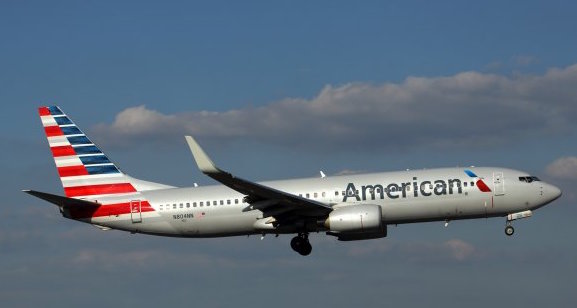
Even as Delta Air Lines moves to expand its footprint at Miami International Airport (MIA) and challenge American Airlines’ Latin American supremacy among US carriers, American is reasserting its dominant position at its South Florida hub.
American carried 30.3 million passengers through MIA in 2019, the first time it has surpassed 30 million passengers at the hub. American predicts “another record-breaking year” in 2020 at MIA.
American’s dominant position in Latin America took a blow when Delta last year announced it was investing $1.9 billion to take a 20% stake in LATAM Airlines and another $350 million to support the establishment of a strategic partnership with LATAM, which subsequently left the oneworld alliance, of which American is a leading member, and backed out of a previously planned partnership with American.
Still, American remains the number one carrier at MIA. It operates more than 340 daily flights from MIA to nearly 130 destinations, including service to more than 80 cities across Latin America and the Caribbean.
“American’s hub at MIA, the airline’s largest international gateway, has continued strengthening its footprint in Latin America and the Caribbean since being established 30 years ago and will continue its growth in 2020,” American said in a statement after Delta announced it was expanding at MIA. “Set to begin this year are additional frequencies to Lima, Peru (LIM); Santiago, Chile (SCL); and São Paulo, Brazil (GRU).”
ANA to launch Tokyo Haneda-Istanbul flights

Japan’s All Nippon Airways (ANA) will be boosting long-haul international flying from Tokyo Haneda Airport this spring and summer, including starting a new Tokyo-Istanbul service on July 6.
Haneda-Delhi flights will start on March 29. Both the Istanbul and Delhi routes will be operated daily with Boeing 787-8 aircraft. The Haneda-Delhi flights replace Tokyo Narita-Delhi flights, which will be dropped.
The carrier is also starting daily service between Haneda and Washington Dulles and between Haneda and Houston Intercontinental from March 29 using 777-300ERs. On March 29 it will also commence daily Haneda-Seattle flights using a 787-8. All three US routes are replacements for flights to the cities from Narita that will be dropped.
Daily flights between Haneda and Moscow will start July 1 using a 767-300ER.
Daily Haneda-Qingdao, Haneda-Shenzhen and Haneda-Ho Chi Minh City flights will start March 29 using 787-8s.
ANA will also start daily Tokyo-Narita-Hanoi flights starting March 29 using a 787-8; this will replace a Haneda-Hanoi route.
United to start hourly Washington DCA-Newark shuttle
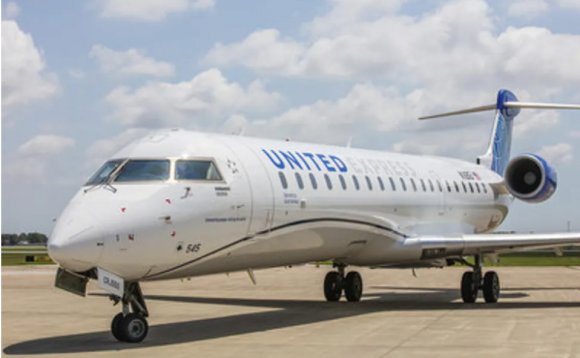
United Airlines will start an hourly shuttle service between Washington National (DCA) and Newark (New Jersey) Liberty airports using a Bombardier CRJ-550 on most flights.
The new service connecting the nation’s capital and the New York City metropolitan area is set to commence March 29. The CRJ-550 seats 50 passengers in a 10-20-20 format; 30 of the seats are either domestic first class (10) or premium economy (20). Flights on the route not using the CRJ-550 will be operated with Embraer E175s.
The CRJ-550, which debuted late last year, is operated by GoJet Airlines, a United regional partner owned by Trans States Holdings.
To open up aircraft for the new shuttle service, United will drop two routes: Cleveland-DCA and Cleveland-New York LaGuardia. United will continue to serve Washington Dulles and Newark from Cleveland. It will also continue to serve Florida destinations Fort Lauderdale, Fort Meyers, Orlando and Tampa from the Ohio city.
JetBlue adds Guatemala City and drops Oakland
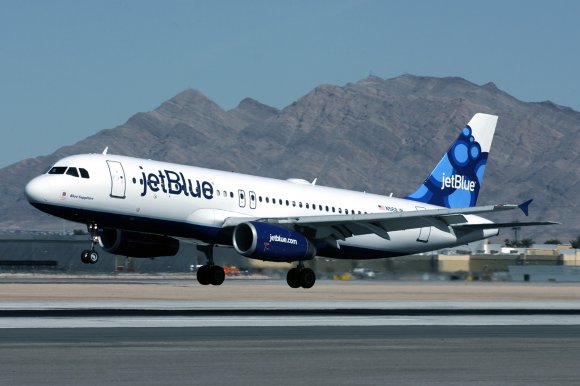
JetBlue Airways will launch daily service between its New York JFK base and Guatemala City from June 1, 2020.
Guatemala will become the 25th country served by JetBlue. The carrier will use an Airbus A320 on the route.
JetBlue also announced it will start flights between JFK and Nashville, Tennessee on April 28. The carrier already serves “Music City”—the home to the US’s country music industry—from Boston and Fort Lauderdale, Florida, having started flights on the routes in 2016. The JFK-Nashville service will operate 2X-daily using an A320.
The Nashville Convention and Visitors Corp. noted that New York has become the city’s number three market for visitation.
The new services are enabled, JetBlue said, by dropping Oakland, California from its network. As of April 29, flights from Oakland to JFK, Boston and Long Beach, California will cease operating. JetBlue said it will continue to operate to San Jose and San Francisco in the Bay Area.
Taiwan’s STARLUX marks launch with network expansion plans
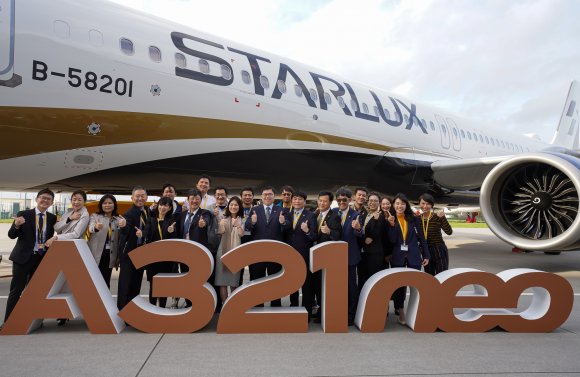
Taiwanese startup STARLUX Airlines, described as a luxury boutique airline, will operate Taipei Taoyuan-Cebu service with an Airbus A321neo aircraft. Flights will be daily from April 6, 2020.
Cebu, the host of Routes Asia 2019, will become STARLUX’s fourth route, joining Taipei-Macau, Taipei-Penang and Taipei-Da Nang. According to OAG Schedules Analyser, from the w/c April 6, Cebu, Penang and Da Nang will all be 1x-daily, and Macau will be 3x-daily.
STARLUX has been founded by Chang Kuo-Wei, a former chairman of EVA Air. It secured its air operator’s certificate (AOC) from the Taiwan Ministry of Transport and Communications in December ahead of its first commercial flight on Jan. 23.
The airline has three A321neos in its fleet with seven more leased from GE Capital Aviation Services due by the end of 2021. In addition, it has 12 A3501000s and five A350-900s on order.
Three carriers currently operate the Taipei-Cebu sector. Philippines AirAsia provides 2x-daily Airbus A320 services; EVA Airways operates the route daily using Airbus A330-300, and Tigerair Taiwan flies three times per week on board Airbus A320.
China Airlines is also adding the route to its network from late-March. The Taiwanese airline will begin service on March 29, offering six flights per week using Boeing 737-800 aircraft.
OAG data shows that from w/c April 6, Philippines AirAsia will have a 36.3% capacity share of the total number of seats on offer, followed by EVA with 31.1%, STARLUX with 18.9% and China Airlines with 13.7%. There are currently no Tigerair Taiwan Taipei-Cebu flights scheduled after March 27.
Cebu has secured a number of new route successes in recent weeks, including Philippine Airlines’ plans to serve Los Angeles from May 2 and Qatar Airways adding Doha-Cebu from April 8.
Wizz Air is expanding its presence at St Petersburg’s Pulkovo Airport
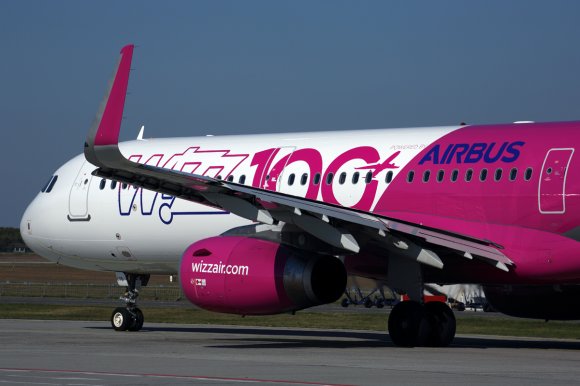
Central and Eastern Europe low-cost carrier Wizz Air is launching four routes from Russia’s second city, St Petersburg.
Flights from Pulkovo Airport to Bratislava in Slovakia will be 4x-weekly from June 1, 2020, with a 2x-weekly service to Vilnius in Lithuania starting two days later.
The airline will then add routes to Bucharest in Romania and Sofia in Bulgaria from July 1 and 2, respectively, both of which will be 3x-weekly.
“Today’s announcement underlines Wizz Air’s commitment to creating more and more low-fare travel opportunities for Russian travelers,” Wizz CEO József Váradi said. “The four new European destinations from Saint Petersburg to Bucharest, Vilnius, Sofia, and Bratislava expand our network and provide an ever-growing choice of affordable travel to European destinations on one of the youngest and greenest fleets.”
On Jan. 1, 2020, Pulkovo Airport became the first in Russia to receive seventh freedom rights for foreign airlines. The seventh freedom allows airlines to commence commercial services between two foreign countries without touching their home country.
Russia’s MOT approved 21 countries to operate such flights without any restrictions and a further nine with some restrictions on points of departure or arrival. The move came three months after Russia simplified the visa requirement for 53 nations arriving into St Petersburg by air.
Leonid Sergeev, CEO of Pulkovo Airport operator Northern Capital Gateway, said the airport now has “unprecedented conditions” to develop as an international aviation hub.
“We are the first in Russia to offer foreign airlines such as unique market conditions. I am confident that the new Wizz Air flights will be in high demand both among Russian and foreign travelers,” he said.
Wizz Air began operating Budapest-St Petersburg flights in August 2017, while Wizz Air UK began London Luton-St Petersburg services in October 2019.
The 21 countries granted seventh freedom traffic rights without restrictions include Belgium, Denmark, Ireland, Norway, and Portugal. Nine other countries have been approved to operate seventh freedom rights but with the following restrictions on points of departure or arrival.
Allegiant announces its largest service expansion

Low-fare leisure carrier Allegiant has announced its largest ever service expansion, driven primarily by routes connecting underserved cities to popular destinations.
The airline has announced 44 new nonstop routes, including 14 routes to three new cities: Chicago, Boston and Houston. Most of the routes are non-competitive, with no other airline providing service between those airports.
“There is a lot of leisure demand for cities that are regional destinations, and this route expansion will address some of that need,” said Drew Wells, Allegiant vice president of planning and revenue. “Also, this growth is about Allegiant being true to our mission as a company. We’re increasing the number of low-cost, affordable travel options for people who may otherwise be priced out of air travel.”
New seasonal routes to Boston Logan International Airport include services from Grand Rapids, Michigan (Gerald R. Ford Airport) from 7 May; Asheville, North Carolina (Asheville Regional Airport) and Knoxville, Tennessee (McGhee Tyson Airport) from 8 May, as well as Destin/Ft. Walton Beach, Florida on 14 May.
The new seasonal routes from William P. Hobby Airport include services from Knoxville, Tennessee beginning 21 May; Asheville, North Carolina from 22 May; Savannah, Georgia (Savannah/Hilton Head International Airport) from 28 May and Destin/Fort Walton Beach, Florida from 5 June.
Chicago Midway International Airport will gain six new seasonal routes meanwhile, with the first (to Allentown, Pennsylvania) beginning 14 May.
JetBlue refines services and plans
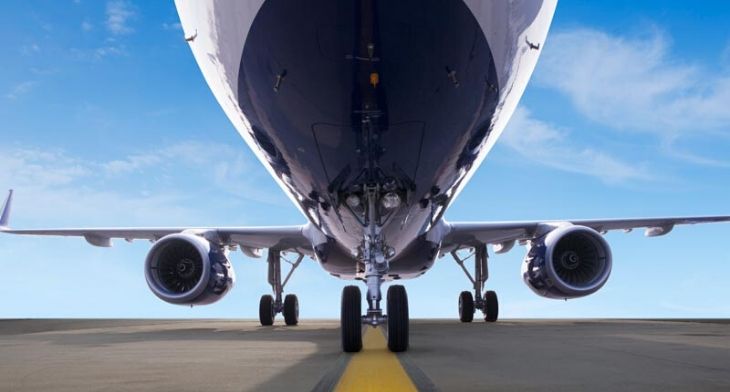
JetBlue has announced a reshuffle of services, expanding services at airports including Montana’s Bozeman Yellowstone International Airport and Nashville International Airport while reducing flights on others, including ending service at Oakland International Airport.
Scott Laurence, head of revenue and planning, JetBlue commented: “With new destinations on tap for 2020, more flights in our best performing markets and tactical adjustments to maximize the success of our fleet and network, we enter a new decade from a strong position that sets us up for success in the years ahead.
“We continue to identify opportunities to strengthen our focus cities and allocate flying so we can offer better schedules and high-demand destinations for our customers.”
The airline is expanding service at Bozeman Yellowstone International Airport with flights to and from the east coast. New nonstop service from New York-JFK and Boston Logan International Airport will operate on a summer and winter seasonal schedule starting in June. New York flights will operate three times weekly, up to daily at various times throughout the seasons, while Boston flights will operate twice weekly.
“Our relationship with JetBlue started back in 2011 with initial discussions and visits with their team to gauge interest in the BZN market and we’ve kept in contact with them over the years as our market grew,” said Scott Humphrey, deputy airport director, BZN. “JetBlue introduced seasonal service from Bozeman to Long Beach, California in 2018, and the success of that service has given JetBlue the insight and confidence in our market to add these two new East Coast seasonal flights.”
JetBlue is also adding service from a third focus city to Nashville International Airport with new nonstop flights between Music City and New York-JFK with flights operating twice daily starting 28 April 2020. Nashville Convention and Visitors Corp president and CEO Butch Spyridon welcomed the service and said: “New York has become our number three market for visitation, and the direct service gives us an opportunity to grow one of the largest and best markets in the country.”
The airline has also announced flights to the Central American city Guatemala City, marking its 25th country served. Flights to La Aurora International Airport start 1 June 2020 with nonstop flights operating daily from New York’s John F. Kennedy International Airport.
In order to enable the route expansions and new destinations, the airline will redeploy aircraft, adding flights to some existing routes and reducing flights on those that it says aren’t meeting expectations.
From 29 April 2020, JetBlue will end service at Oakland International Airport where it currently serves New York-JFK, Boston and Long Beach. The airline is also reducing or eliminating flights on “half a dozen short-haul routes” in Long Beach, while adding flights from Fort Lauderdale and Orlando.
Meanwhile in Cuba, the airline said “changes to the regulatory landscape have affected travel trends to the island” and to best meet demand, JetBlue will adjust schedules to maintain up to three daily flights to Havana from Fort Lauderdale and revise to once weekly service on Saturdays from New York-JFK.
New report says Delta Air Lines ranks as the best in the US
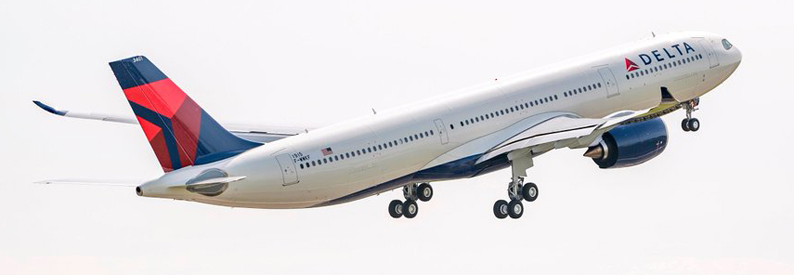
If you’re wondering about which airline to choose to book your next flight, The Wall Street Journal has a list you may want to see.
For the third year in a row, Atlanta’s Delta Air Lines landed in the top spot of the best airlines in the US. It was followed by Alaska and low-cost carrier Allegiant Air tying for second place and ultra-low cost carrier Spirit Airlines rounding out the top 5. Meanwhile, American Airlines came in last. It’s the third year since 2015 that the Fort Worth, Texas airline ranked in the position.
The categories Delta ranked no. 1 in are on-time arrivals, canceled flights and involuntary bumping from flights as well as being the top overall airline. The WSJ report says Delta had an average of 36 canceled flights a day in 2019. By comparison, American had more than four times the cancellations with 159 a day last year. Each day, Delta had an average of 1,345 late or lost bags. Meanwhile, American had upwards of 2,600 lost or late pieces of luggage. Last year also saw only nine passengers bumped from Delta flights. Those flying on American saw over 15,000 passengers bumped from the aircraft. And with higher instances of severe weather and travel increasing at high rates last year – especially over the holiday season – Delta still managed to improve its average on-time arrivals. The report cites Global Eagle’s data analytics unit masFlight when noting that Delta went from an 82.9% arrival rate in 2018 to 83.4% in 2019.
“While the weather itself is out of our control, how we react to that weather, plan for that weather and work through that weather is certainly within our control,” Dave Holtz, Delta’s senior vice president over the airline’s operations center, told WSJ. Delta also saw improvements in its cancellation rates. In 2018, the airline and its regional partners canceled 0.9% of its flights, but last year that decreased to 0.7%. American and second-to-last place United Airlines canceled 2% of their flights in 2019. Delta also fared well in the complaint category, ranking at no. 3. The top spot in that area, however, went to Southwest Airlines. Southwest also fared the best in the 2-hour tarmac delays category and Delta ranked no. 6.
Rankings of major airlines from best to worst (overall):
Delta Air Lines
Alaska Airlines
Southwest Airlines
Allegient Air
Spirit Airlines
JetBlue
Frontier Airlines
United Airlines
American Airlines
Delta to expand flights at Miami International
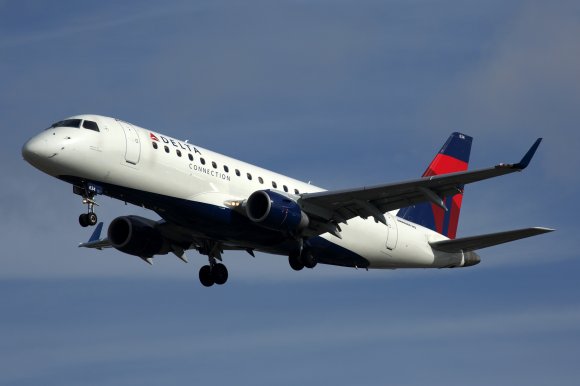
Delta Air Lines plans to add 13 new daily nonstop domestic flights to Miami International Airport, boosting connections to the South Florida gateway to Latin America as it grows its partnership with LATAM Airlines, the leading South American airline.
Atlanta-based Delta last year announced it was investing $1.9 billion to take a 20% stake in LATAM and another $350 million to support the establishment of a strategic partnership with LATAM. The move undercut the prior relationship between American Airlines and LATAM, which subsequently left the oneworld alliance, of which American is a leading member.
With the new service, Delta will boost its domestic flying from 28 daily flights to Miami to 41 by June 28, 2020. Most of the new flights will start in May and be operated with Embraer E175 aircraft.
New daily service between Delta’s Salt Lake City, Utah hub and Miami will be operated with a Boeing 737-800 and commence June 28.
Delta will offer 5X-daily flights between Orlando, Florida, and Miami starting May 4, all with E175s. It will offer a 2X-daily service between Raleigh-Durham, North Carolina, and Miami from May 22 with E175s. It will offer 5X-daily flights between Tampa, Florida, and Miami starting May 4 with E175s.
“Together, Delta and LATAM will create the most comprehensive combined carrier network throughout the Americas, carrying more passengers between North and South America than any other partnership,” Delta said in a statement, noting, “The enhanced cooperation is subject to governmental and regulatory approvals.”
Delta and LATAM recently announced plans to codeshare on select flights operated by certain LATAM affiliates in Colombia, Ecuador, and Peru beginning in the first quarter of 2020, pending receipt of applicable government approvals.
Flights operated with E175s are flown by Delta Connection regional carriers.
Enterprise now offers the Jaguar F-Type SVR

Enterprise Rent-A-Car and Jaguar, customers now have the opportunity to get behind the wheel of the highly sought-after Jaguar F-Type SVR. In select locations throughout the U.S., the Jaguar F-Type SVR is now available for rent through the Exotic Car Collection by Enterprise.
The Jaguar F-Type SVR will be added to the Exotic Car Collection fleet at locations in Atlanta, Orlando, Chicago, Washington, D.C., Minnesota, San Francisco, Los Angeles, Naples, Pittsburgh, South Florida, Seattle, Phoenix, North Carolina, Las Vegas and Nashville.
The Exotic Car Collection was founded in 2006 to meet customer demand for luxury vehicle rentals. Today, there are more than 50 locations in cities throughout the country, and the brand continues to expand the offering to new markets throughout the U.S. and Canada.
LATAM to move to Delta terminal at New York JFK

LATAM Airlines will join Delta Air Lines at New York JFK’s Terminal 4 on Feb. 1, enabling passengers to connect on Delta flights to more than 90 destinations in the US and worldwide.
The move will see the Chilean airline transfer operations from JFK’s Terminal 8, which it currently shares with erstwhile partner American Airlines.
“The relocation of LATAM’s operations at JFK Airport marks another important milestone in our journey toward offering the best connectivity and customer experience in the Americas,” said LATAM commercial VP Roberto Alvo. “We are committed to providing an expedited transition for passengers around the world, working tirelessly to offer the benefits of the deal with Delta as soon as possible.”
The migration to JFK’s terminal 4 comes on the heels of Delta’s completion of its acquisition of a 20% stake in LATAM in early January, valued at roughly $1.94 billion. In December, LATAM’s Colombian, Ecuadorian and Peruvian subsidiaries inked codeshare agreements with Delta, subject to approval by regulators in the various countries.
LATAM’s Colombian unit became the first of its South American subsidiaries to receive such approval when Colombian authorities green-lighted the codeshare agreement mid-January. LATAM said in a Jan. 16 press release that it expects to receive approval from Ecuadorian and Peruvian regulators during the first half of 2020, while codeshare agreements with its Brazilian and Chilean units are expected to gain approval later in the year. On the US side, the proposed codeshare agreements with the Colombian, Ecuadorian and Peruvian subsidiaries were approved by the Department of Transportation in December.
LATAM will cease codesharing with American on Jan. 31, although existing agreements governing frequent flyer and reciprocal access to VIP lounges will remain in effect until the Santiago-based airline group formally exits the oneworld alliance. While the exact timing of that move remains unclear, LATAM said Jan. 16 it is “evaluating an early departure date,” adding that “any changes will be communicated in a timely manner.”
After exiting oneworld, LATAM said it plans to maintain bilateral agreements with most of the alliance’s member airlines, including British Airways, Cathay Pacific, Finnair, Iberia, Japan Airlines, Malaysia Airlines, Qantas, Qatar Airways, Royal Jordanian, S7 Airlines and Sri Lanka Airlines. The Chilean airline group abandoned plans to create a joint venture with oneworld members and IAG subsidiaries British Airways and Iberia in December, a move that was widely expected following the announcement of the Delta transaction in September.
The worst airlines in America according to the Wall Street Journal
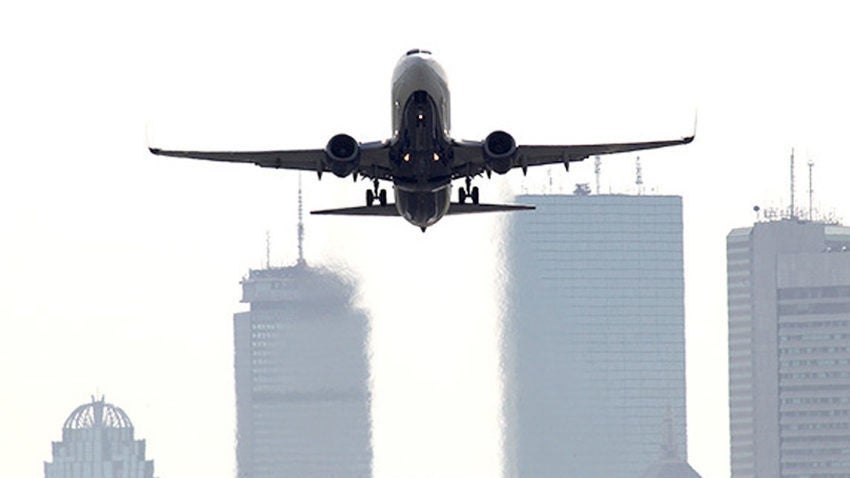
The newspaper released its 2019 Airline Scorecard which ranked American last out of nine U.S. airlines. The No. 1 airline in America, for the third year in a row, is Delta Air Lines, according to the report.
The annual report ranks the airlines in the following seven areas: on-time arrivals, canceled flights, extreme delays, two-hour tarmac delays, mishandled baggage, involuntary bumping, and complaints. American, which has ranked last in three of the past five years, had the worst score in four of the seven categories: canceled flights, two-hour tarmac delays, mishandled baggage, and involuntary bumping.
“For more than half of 2019, a contract dispute between American and its mechanics was essentially negotiated on the tarmac, with passengers paying a heavy price,” the Wall Street Journal wrote. “From mid-February through late August, American had a high number of planes out of service each morning, forcing cancellations and delays and leaving customers stranded.”
Top-ranked Delta has an “industry-leading cancellation rate,” according to the publication, and ranked the best in three categories: canceled flights, on-time arrivals, and involuntary bumping.
JetBlue, Logan International Airport’s largest carrier, ranked sixth and had the worst score for extreme delays.
The report used data from masFlight and the U.S. Department of Transportation. This is the 12th year the paper has provided a scorecard of U.S. carriers. www.boston.com
Chicago-bound flight diverted to New Mexico due to unruly passenger
American Airlines McDonnell Douglas MD-80s and Boeing 767 parked
An American Airlines flight from Los Angeles to Chicago was forced to divert to Albuquerque on Wednesday because of a disruptive passenger, the airline said.
According to the airline, American flight 967 from LAX to O’Hare was diverted Wednesday afternoon due to an incident involving a passenger.
The flight landed in Albuquerque, New Mexico just before 3 p.m., and took off after being met by law enforcement officials at the gate.
According to television station KOB in Albuquerque, a person on the flight tweeted that the passenger struck a flight attendant, took his pants off, and kicked seats.
It is unclear what charges the passenger will face. www.nbcchicago.com
Restaurant Trends

Culinary experiences are becoming a more central part of many travelers’ vacations. They look to be immersed in food and beverage programs being offered at hotels across the globe.
In fact, in a recent travel survey, AAA found that an estimated 22 million Americans expect to take a culinary-focused vacation in the next year. Seventy-five percent of Americans feel that food and dining are an important part of their travel experiences.
Chefs and bartenders from Kimpton Hotels and Resorts across 37 cities shared what they expect to dominant the culinary scene as we usher in the new year. According to its fourth annual Culinary & Cocktails Trend Forecast, 2018 will bring international flavors, healthy options, and creative cocktails.
Meat alternatives go mainstream
A majority of Kimpton chefs said plant-based proteins such as tempeh or bloody beet burgers will gain a spot on the menu next to traditional entrees. Industry tracker Euromonitor estimates a 10 percent growth in meat substitutes in the U.S. and 23 percent globally over the next half-decade.
Next-level coffee cocktails
Going beyond traditional Irish coffee, bartenders will create coffee cocktails with a twist, from a Turkish espresso with aged rum and agave infused with cacao nibs to a cardamom-coffee vermouth Manhattan.
Nordic influences
Expect to see fresh and colorful ingredients like carrots, cabbage, and beets, and the embrace of alternative berries including juniper and lingonberries. Think beet-cured salmon with dill cream cheese, cucumber, shaved fennel, and pickled mustard seeds or pan-seared arctic char. Nordic influences will also find their way onto drink menus, with Scandinavian cocktail ingredients like bramble shrub, dill, rhubarb, and aquavit.
Emerging spices
Chefs are cooking with exotic flavors such as Za’atar, a traditional Middle Eastern condiment made from spices like sumac, marjoram, thyme, and toasted sesame seeds; and Vadouvan, the French interpretation of Indian curry and Kampot pepper – an elusive spice found only in the Kampot Province of Cambodia.
Cocktails with a healthy spin

Bartenders are embracing nontraditional vegetables like beets, carrots, green beans, butternut squash, corn, and radishes in their cocktail creations. There will also be an increase in demand for cocktails with healthy add-ins like turmeric or ginger that provide alternatives to sugary drinks.
Beer and whiskey imports
The report unveiled an upswing in German-style Gose beers and other sour beers. Gose beers, which typically have coriander added to them, are crisp with a touch of tartness and herbal sub-tones. The forecast also found a growing interest in Japanese whisky, providing a lighter, cleaner, floral alternative to American whisky. There are cocktails inspired by Japanese highballs with influences of soft fruit and spice, all the way up to herbaceous and smoky.



